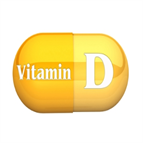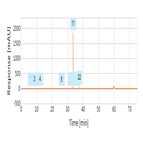Find methods for your needs
Refine by Feature
Displaying 1-5 of 94 results for Tag: Hypersil GOLD
High-precision, automated peptide mapping of proteins
Instrument Type: UHPLCThe biopharmaceutical industry continues to develop protein-based biotherapeutics in increasing numbers. Due to their complexity and biotechnological production, there are many attributes that need to be analyzed to guarantee their safety and efficacy. Peptide mapping is used to measure several critical quality attributes (CQA) required for the characterization of any biotherapeutic protein. The analysis is used to confirm that the correct sequence has been expressed for the protein and to check for post-translational and chemical modifications.
Rapid Analysis of 25-Hydroxyvitamin D3, epi-25-Hydroxyvitamin D3, and 25-Hydroxyvitamin D2 in Plasma for Clinical Research Using High-Resolution Mass Spectrometry
Instrument Type: LCMSMSChromatographic separation is required for simultaneous analysis of 25-hydroxyvitamin D3 (25OHD3) and its epimeric form 3-epi-25-hydroxyvitamin D3 (epi-25OHD3) in a liquid chromatography-mass spectrometry (LC-MS) method because both compounds have the same molecular formulas and the same fragmentation spectra. We developed an LC method that provides baseline separation between the two isobaric compounds. We coupled this chromatographic method to an MS method, which collects high-resolution MS/MS spectra for compound identification and quantitation.
Separation of related impurities from Icatibant (Peptidomimetic compound)
Instrument Type: HPLCThe Thermo Scientific Dionex UltiMate 3000 LC system is applied to the separation of the related impurities of Icatibant. The separation was performed on a Thermo Scientific Hypersil Gold HPLC column with UV detection at 210 nm. With a total run time of 75 minutes the method allows separation of all related impurities of Icatibant.
Non-Targeted Screening of Lipophilic Marine Biotoxins by Liquid Chromatography-High-Resolution Mass Spectrometry
Instrument Type: LCMSMarine biotoxins are produced by naturally occurring microalgae, whose populations can increase significantly under certain environmental conditions to form a harmful algal bloom (HAB). Marine biotoxins pose a significant food safety risk when bioaccumulated in shellfish that are ingested by humans. We describe the use of the Thermo Scientific Exactive benchtop LC/MS system powered by Orbitrap technology for screening lipophilic marine biotoxins commonly found in shellfish. The method was optimized using a standard mixture of marine biotoxins, and then applied to a mussel tissue extract.
Analyzing Phenolic Pollutants in Water Using U-HPLC
Instrument Type: UHPLCPhenolic compounds are of particular environmental importance due to their relatively high toxicity at low levels and their presence in environmental waters and organic matter, following degradation of a range of industrial products such as pesticides and herbicides, as well as naturally occurring humic substances and tannins. We demonstrate analysis optimization by variation of column chemistry, and the viability of reducing stationary phase particle size to significantly increase analysis speed, while maintaining separation parameters and increasing sensitivity.





